3 Why Raw Food?
Reasons for and against raw food: disease or obesity often causes people to turn to raw food. But you can end up on an unhealthy path, as with any type of diet.
Table of contents

Conclusion
This article focuses on several major arguments for changing to a raw food diet. In it, I will also discuss some of the more disputed ones. Each of the claims could clearly open up a discussion of its own, which could fill a whole volume of books. Here are the most important points.
There are good reasons to eat a raw food diet, some of which are analytically deduced and others which become obvious through synthesis.
1. The Maillard reaction
An example of an analysis-based argument is the Maillard reaction, which occurs when food is heated; this process has been scientifically shown to cause cancer-promoting inflammation in cells.
Acrylamide is only one of the possible carcinogens resulting from the Maillard reaction. It is found in the highest levels in starchy foods such as French fries and potato chips.

Maillard identified around 450 different molecular bonds in potatoes cooked at a high temperature. Only one of these, acrylamide, came to public attention in 2002. The food industry takes full advantage of the Maillard reaction, which gives fried and baked foods their desirable flavor. See also our book reviews of "Salt Sugar Fat" and "Lügen Lobbies Lebensmittel (Lies lobbies food)".
It is important to draw a conclusion based on analysis, tests, synthesis, and their results
However, we shouldn’t highlight only the conclusions which promote raw food. Or should we? Our understanding of the word “analysis” is detailed examination.
The results or conclusions have to be established or proven by practical experiments.
A negative bias toward raw food, as was the case for the Giessen Raw Food Study (only available in German at this time) would be just as wrong as a positive bias, for example, by saying that raw food is the only way.
Direct links between diet and health are of special importance. An analysis of food ingredients in relation to the nutritional needs of humans is essential.
Where significant differences arise arbitrarily, it is important to draw a conclusion based on analysis, tests, synthesis, and their results. This is not always easy.
2. Our predecessors lived exclusively from raw food for millions of years
Returning now to the statement I made above that “some reasons become obvious through synthesis.” I would like to show that not only analysis but also logic can lead to inference. A clear example is that undomesticated animals eat raw food. We also know that our predecessors (not ancestors) lived exclusively from raw food for millions of years.
We also know that full genetic adaptation (adaptation, natural selection, evolution — see also geochronology) takes hundreds of thousands or millions of years. We know too that fire was discovered several hundred thousand years ago, but that it has been used regularly in food preparation only in relatively recent years.
False conclusions being drawn by inference
Certain misconceptions also exist regarding early cooked foods, especially as to what type of foods were cooked.
This is comparable to beliefs that were held about the large prehistoric flightless bird, the Gastornis. Scientists believed these to be 400-pound carnivorous monsters or terror birds.
It wasn’t until 2013, with the help of isotope studies, that a rethinking took place. Despite clear evidence, the early adherents still cling to the meat-eating theory — as in the case of what early humans ate.
I believe it is important to analyze both individual factors and the example nature has provided us. We would then have a result that would correspond to both types of synthesis. Only in this way can we build on a very solid basis — even if all of society are against the concept, and certain circles vehemently position themselves against it out of ignorance, tradition, belief, or lobbying.
In this way, the idea that raw food is good and important for humans doesn’t remain just a theory. It is not just jumping to conclusions but is a true and documented fact.
These and other findings strengthen the argument that raw food would be “the right type of food” for humans as well. However, only once we show positive experience-based results, can such a “direct synthesis” or “basic logical knowledge” be defendable as an argument.
3. Raw food in medicine
In the United States, raw food in medicine is no longer feared. The advantages of raw food have been shown by extensive epidemiological studies. An increasing number of books written by doctors are appearing which clearly show that a radical dietary change significantly reduces the risk of cancer and can also lead to healing cancer. And these are doctors who practice conventional medicine. You can read more about this in another article.
The causal links between most medicines and their effects aren’t fully understood. There are too many parameters surrounding illness and disease, and there are often multiple reasons a person gets a disease. Every person is genetically different and therefore reacts differently to medications.
Raw food not only serves to suppress symptoms, but also treats the causes of clearly defined conditions and diseases
Many medications serve only to suppress symptoms, for example, betablockers and ACE inhibitors used for hypertension (high blood pressure). It is better to prevent such conditions through proper nutrition.
Medications also cause adverse effects and long-term damage.
In the case of high blood pressure, in particular, which is “one of the four major risk factors” for stroke, cardiovascular disease, and premature death, a vegan raw food diet has been shown to have positive effects within 14 days.

1. Why raw food?
There are many different reasons why people change over to a raw food diet. As well as reasons of illness, some do it for ecological or for religious reasons. This type of diet is generally only “forgiven” and accepted when the person involved is sick or obese, or when raw foodists show positive results. Strangely raw food snacks are “in,” so in fact people considering changing to a raw food diet wouldn’t have to do much rethinking. ...
The larger cognitive brain allowed humans to get over their extreme fear of fire
There are even absurd notions from science, for example, that eating cooked food has caused an increase in the size of the human brain. In fact, it was the other way around. The larger cognitive brain allowed humans to get over their extreme fear of fire so that they could utilize it to their benefit.
Eventually humans learned how to ignite a fire and control it. But it wasn’t until later that we learned by accident that fire could be used to cook and roast food.
But even this assumption is uncertain as it is possible that even before this humans had eaten the meat of animals that had died in bush or forest fires.
We are all hugely influenced by our environment and the people around us. From the time we are very small, we tend to accept and imitate what we see — even to the point of accepting obscure views or “forms of life” and extremism.
We behave like herd animals
In short, we behave like herd animals or lemmings (think Walt Disney) and parrot what we hear in the tabloid press, on the radio, or on TV. On the positive side, this also leads to behavioral ecology.
Prior to this, we’re also influenced by our parents. It is therefore no wonder that we are met with disapproval from most people when we mention raw food as a type of diet or an alternative diet.
I can already hear the objections: “But where do you get the necessary carbohydrates?” or “Where’s the protein?” And you won’t only hear this from laypeople. Nevertheless, the answer is quite simple.
For more background information on the connections between the food industry and policy makers, please see my book reviews on Sugar Salt Fat and Lügen Lobbies Lebensmittel (Lies lobbies food).
Why should we do something that seems to be less enjoyable? After all, we can live a lot longer now thanks to conventional medicine. But it must be said that many people over age 60 already have many ailments. People suffer from medical conditions too often and too early. These are seldom noticeable to outsiders.

Is it all just the luck of the draw (or fate)? Is being overweight or obese just fate as well? Or is it an economic issue? Take a look at these statistics on causes of death.
The question that begs to be asked is, Why are we not as fit and healthy in the second part of our lives, or rather why is life less enjoyable then?
In any event, science has shown that the genetic life expectancy of humans is around 120 years! We increasingly hear of major studies being conducted in this field in the United States.
Several leading doctors have made radical changes to their diet
Several leading U.S. doctors have made radical changes to their diet in order to greatly reduce their risk of getting prostate cancer. Bob Arnot wrote, I saw a big secret come to light — food as one of the most important ways of preventing prostate cancer.
[252-14]
Arnot was actually originally looking for a way to protect his wife from getting breast cancer as she was at high risk. He and other U.S. doctors who are not otherwise interested in alternative medicine are also writing about curing cancer through a radical change in diet.
Of course, raw food won’t be able to magically make all of your ailments disappear. People often have ailments that took perhaps 50 years to develop. So, what arguments do raw foodists put forward for following a raw food diet for a longer period of time, rather than only as a temporary diet?
1.1. Health reasons
As I have outlined elsewhere, my own reasons for turning to a raw food diet were health-related, and specifically cancer-related. I don’t claim that cancer can always be cured by a raw food diet. But I do know that a large number of people have regained their health by eating a raw food diet. There is an equally large number of authors who give health reasons as their main reason for changing to a raw food diet.
The Giessen Raw Food Study (currently German only) reports that raw foodists mainly cite health reasons for turning to raw food, as is also the case with others who follow whole-food diets [217-66]. In this scientific study, participants had eaten raw food prior to the study for 3.5 years on average, and these people were still of the opinion that it improved their health. This does not prove anything and could even be misleading, the original motive having given them a feeling of certainty.
All types of absurd diets
But there are all types of absurd diets that can be found. Most of these are promoted by institutes, books, or products and are therefore commercial endeavors. Then there are also health and weight-loss reports as, for example, in [47] the Atkins diet. This meat-heavy diet can certainly help some people who have too much or the wrong type of fungus in their gut. It may also lead to the desired weight loss. But both of these are only achieved at the expense of long-term health.
So, in fact, some of these “special” types of diets may not be that absurd for some people as long as they are well informed before following the diet and it is only a short-term measure.
Regardless of what you believe or do, the placebo effect shouldn’t be underestimated. Faith in something helps, even if no active ingredient is taken. As I have experienced and critically examined the different aspects of raw food, I can confirm that a vegan raw food diet has a huge effect on our health. Faith and the placebo effect cannot keep up with that. With a raw food diet, our cells are spared the ill-effects of the Maillard molecules. Over time, this alone will improve the performance of our organs and body.
Further substantive reasons, as to why a raw food diet works
At a later point, I will give some further substantive reasons, as to why a raw food diet works.
But here are some good reasons and some I would question: Why does a person who is ill often suffer from a lack of appetite? Why do people with certain types of cancer have an instinctive urge to avoid products containing a rather large percentage of Maillard molecules?
According to [224-6], between 1984 and 1991, over 5'000 patients were cured of excessive allergies, mainly through fasting and consuming a living plant food diet,
in the Villinger Schwarzwald-Klinik in Germany.
Many of these patients still follow this diet today. They are healthy, happy, and content.
The report continues: Numerous clinical records at the Institut für Biologische Medizin (Institute for biological medicine) in Villingen provide documentation showing that a vegan raw food diet can alleviate, or even cure, many chronic illnesses.
[224-10].

Any type of diet can result in success stories and much recognition. I believe the clinic should really provide statistics that comprise all types of cases in order to authenticate their claims.
At another point, I will discuss factors that are summed up well by this commonly quoted statement: Life can only come from life, and dead food can only lead to death.
Dr. Eberhard Schmitt of the Universitäts-Kinderklinik Düsseldorf (University children’s hospital Düsseldorf) says, Breast milk does not cause overload of the as yet immature metabolic organs such as the liver or kidneys; cow’s milk on the other hand does...
According to the clinic, consuming animal products can have the following ill-effects: putrefaction of the gut with a build-up of ammonia, hydrogen sulfide, indole, skatole, Mercaptan (thiol), thioether, all of which strain the liver; problems with the lymphatic system; allergies; the onset of cancer; protein accumulation diseases such as arteriosclerosis and rheumatism; Morbus Boeck (sarcoidosis); diabetes; heart attack (myocardial infarction); apoplexy (stroke); high blood pressure (hypertension); gout; and susceptibility to infection. I would question diabetes in this context.
What should we make of this? It is a little known fact that researchers have postulated or possibly even discovered “living macromolecules.” According to the researchers, these are small cells made up of different chemical constituents, both plant and animal in nature. Supposedly, these structures will not fully undergo the process of mineralization when they disintegrate, preserving the life principle.
Elixir of life and living macromolecules
As early as 1675, French physicist Denis Papin commented that the “elixir of life,” which various colleagues had been searching for, would never see the light of day [G. Speicher: “Ihrer Zeit voraus,” (English: Ahead of their time), Düsseldorf 1967].
Medical doctor W. Harness formulated this roughly so, in his 1977 book:
Scientists have not yet been able to determine whether or not it would be possible to ingest certain life-giving substances together with food. There are many reasons to believe that this would be possible.
W. Ostertag popularized the subject of living macromolecules in [33]. He explains that Dr. B.S. Frank had good results in 1979 with his RNS and DNS diets, as did K. Allgeier with his enzyme therapy in 1978.
Ostertag drew his examples from “untouched native populations,” that is from the Eskimos (indigenous peoples), bushmen or rather San in South Africa, Burusho people in Pakistan, the Botocudos (or Aimoré people) in the Brazilian highlands, and the Lapps (or Sami people) in northern Finland.
According to Ostertag, these peoples live, or have lived, with excellent health and free of lifestyle diseases. He failed to mention, however, that since these groups live so far away from civilization, they are also protected from many life-shortening infectious diseases. It would also be important to mention that Eskimos eat a diet that consists almost exclusively of animal products and therefore have a shorter life expectancy.
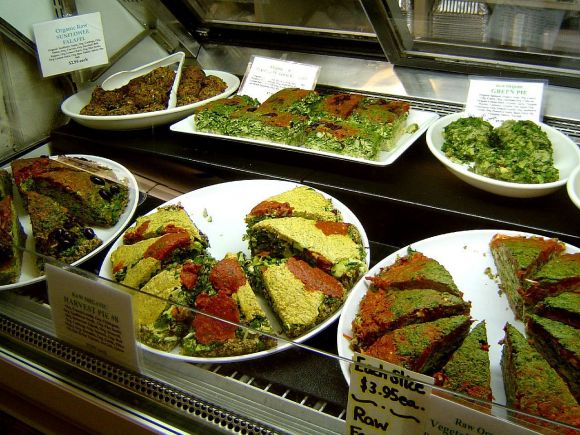
Wandmaker believed that a person who ate only meat would die after 21 days [234-32]. What should you believe then?
Ostertag wrote: Established scientists see life as the product of chemical processes that take place within united cell structures and are not yet fully understood. The process begins with the transfer of electrons between atomic unions and is associated with the presence of amino acids or protein. There can be no life without cells or their chemically-defined information carriers. If it were true that living macromolecules could only be formed within united cell structures, which themselves are undisputedly made up of living macromolecules, this, according to Professor Eisenstein would be just as absurd a claim as the futile chicken or egg question.
Esotericists and the Breatharian Diet
Esotericists essentially believe that all dead and living matter is merely the manifestation of impulses from other levels of life,
therefore bound neither to cells, molecules or atoms (energy [esotericism], ethereal or etheric bodies, and subtle bodies). For the purposes of the present work on raw food, I want to distance myself from the body of thought of the many esotericists, and I’m not taking sides. I simply like to have proof of things — I prefer facts to speculation.

And yet I would bet anyone 25'000 Swiss Francs if they could prove to me that they can live off the Breatharian Diet. I’d even add accommodation, company, opportunity for exercise, and other comforts. The person would only have to bet 2'500 Francs (one tenth of my bet). We would provide the accommodation free of charge.
People who firmly believe that they are living without consuming food are, in my opinion, suffering from schizophrenia.
I wanted to mention this subject in particular; otherwise, it might seem to supporters of the Breatharian Diet that I wasn’t informed about it.
Either way, I wouldn’t have a hope with them. Impulses from different levels of existence
are the most important criterion for some adherents of the raw food diet. But that is another subject altogether.
Esotericists, in particular, have concerned themselves to date with living macromolecules, but this is not the same as the “energy” (esotericism) I mentioned above and will not be addressing here. See also the transport of matter, energy, and information within the body, including the noted macromolecules.
University professor Dr. H.P. Rusch searched for matter encapsulating the actual life process at the macromolecular level, a level right between the not-yet-defined subatomic level and the cell level. He called this matter “microsomes.”
It is clear that raw foodists should eat certain parts of plants, preferably wild plants, and preferably raw. Being a proponent of mass sports rather than elitesports, I would recommend that anyone who is considering trying out an extreme form of diet read the appropriate literature. I would recommend books by Ann Wigmore who presents practical ways of taking such steps.
My aim with this series of articles is to provide a broader view of healthy eating because I am very much aware that a strict raw food diet is quite difficult to maintain. I am also aware that it can be quite a challenge to follow my advice, which tends to be more general. If at a later stage of changing to a raw food diet you realize that a stricter diet type is more appropriate to your needs, you will certainly be armed to do this using the knowledge and practical examples I have shared with you here.
You will also be able to identify potential sources of error associated with such a diet.
Interestingly, R. Dawkins [56] and other experts in the field came to similar conclusions in 1976 and 1978. Even if some of Ostertag’s assertions are misconceptions, for example, his claim that the human body has the capacity to store sugar and fats, but not protein
[33-54], his little book is full of good arguments explaining why raw food affects the body entirely differently than cooked food. These arguments differ from the Maillard molecule or Maillard reaction argument.
Information on the alleged “lack of storage capacity for proteins”
Information on the alleged “lack of storage capacity for proteins”: soluble protein nitrogen (Schoenheimer 1939) is a mixture of components coming partly from food and partly from tissue breakdown that the organism (biomass) uses as material for tissue formation (amino acids and to a lesser extent ammonium). [31-259, Vol. I/I]
The biological half-life of body protein N-pool is 80 days, or 514 mg per kg of weight per day. That represents 11 kg for a man who weighs 150 pounds (70 kg). It takes 10 days of converting the protein to rebalance the pool. It would be too much to include arguments here for having components that are as natural as possible or to discuss Professor Schuphan’s “active zones,” postulated in 1960 and 1977.
What is important to remember is that some people (with arguments that are probably sound) take it a step further than “regular raw food.” I myself am convinced that converting to raw food is only one part of a lifestyle change.
 | In another article under the heading “Refueling yourself with Life” (Leben tanken), I discuss this in more detail. In another article, you will also find a short description of several established raw food diets, which will allow you to later adapt your diet to your “own philosophy.” I do, of course, believe that the best way to go is to eat fresh and natural foods. And I would advise you to choose certified organic foods. |
One further comment: Plant foods are rich in bioactive substances, including the large group of phytonutrients (responsible for color, smell, and taste) and dietary fiber. Bioactive substances have increasingly become the focus of attention since they — along with vitamins and minerals — greatly determine the quality of vegetables.
Bioactive substances
According to numerous epidemiological studies, bioactive substances are beneficial to our health, performance, and well-being. Slowly but surely, the general public is learning that the regular consumption of bioactive substances or phytonutrients reduces the risk of cardiovascular diseases, cancer, and infectious diseases.
Broccoli as an example
The results of an EU-wide consumer survey of 14'000 people showed that when buying food, 8 % of people were influenced by taste and 32 % by the nutritional value of the food.
But it would be important to examine the effects of environmental and agricultural measures on the mineral and vitamin content of vegetables, as well as on the level of phytonutrients they contain.
The Leipzig Institute of Vegetable and Ornamental Crops (IGZ), based in both Grossberren and Erfurt, Germany, carries out such studies. Broccoli is particularly rich in various bioactive substances.
The methods of farming and cultivation, such as choice of variety, production period, and the use of fertilizers are important factors. These criteria can be used to determine the levels of bioactive substances without using genetic testing methods.
1.2. Ecological reasons
With raw food, no energy is needed for cooking, and less environmental pollution occurs as not as much detergent is needed to wash dishes. The basal metabolic rate is reduced, and there is a natural barrier to overeating. Most importantly, raw foodists eat very little or no meat or fish. And when they do, they eat it raw. They therefore have quite a bit in common with vegans.
These ecological reasons are heightened by the suffering of animals kept by humans for food production and the ratio of acreage of land to meat yield, in comparison with plant food production. What goes on in animal-food production is in fact madness. But most of us look the other way and remain unaffected by it.
According to Evangelische Akademie Loccum (Evangelical academy in Loccum), German households spent 33 % of their income on food in 1960. This figure is at about 16 % today. One thing is for sure; this 50 % reduction in spending is not only due to industrial farming and intensive animal farming (aka factory farming) and the resulting measures.
Fattening up animals requires huge amounts of grain
After all, fattening up animals requires huge amounts of grain, and in total these grains supply several times the amount of calories more than the meat on our plates.
The pig is the most adept animal at converting plant energy to meat. During its lifetime, a pig will convert 35 % of the energy it consumes to meat. The corresponding figures for cows and sheep are 6.5 % and 13 % respectively.
Pigs are more economical time-wise as well, needing only seven months for the fattening period, compared to cows, which require 12 to 14 months. A short, sad, and painful life.
Certain religions ban the consumption of pork, and not without good reason. This is not however because of the short and painful life pigs lead today.
1.3. Piety and respect
Given the BSE crisis, the risk of antibiotic residues in meat, and other reasons, many people have reduced their consumption of meat or given it up completely. There are, however, other seemingly altruistic reasons for abstaining from animal products. Many people become vegans or less strict vegetarians also for reasons of piety and respect. In the case of raw foodists, these are seldom the only reasons.
The conditions suffered by animals kept in species-inappropriate environments are especially harrowing as are the methods of transport and slaughter used upon them.
This cannot be compared to the hunting carried out by our ancestors, nor to the form of breeding known as free range animal husbandry (extensive farming). The latter, more natural method of livestock farming still exists today, mainly in Third World countries, especially South America. Before the Second World War, people didn’t eat as many animal products as they do today, with the exception of Eskimos, who, incidentally, age prematurely.
Animal welfare
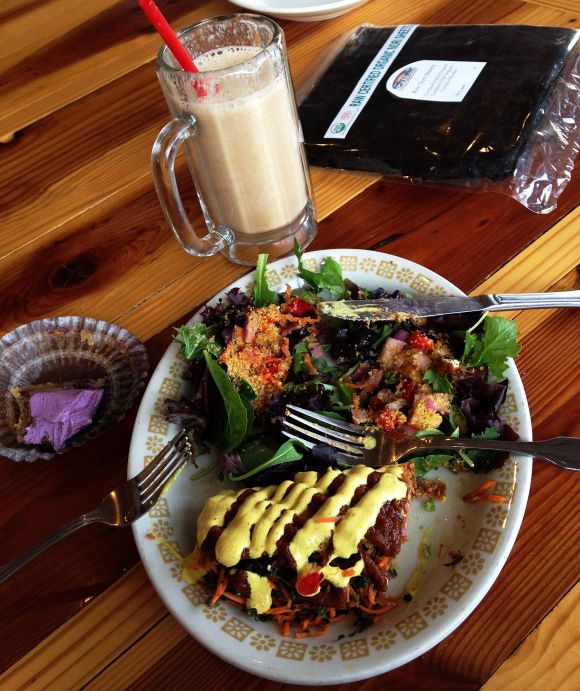 | A vegan raw food dish that I took a photo of in a raw food restaurant in San Francisco in the Spring of 2013. Unfortunately, it doesn’t look quite as appetizing as it did when it was served as the idea of taking a photo of the dish didn’t occur to me until I had already started to eat. The drink is also plant based. |
It is not without reason that all sorts of animal welfare organizations, some more militant than others, have come into existence, and as a result we can no longer claim ignorance on the matter of animal welfare.
On the Internet, there are many noteworthy articles available on the subject, for example, regarding the fact that dairy cows, which should naturally have a life expectancy of around 20 years, are often slaughtered between the ages of three and seven because of disease or because they aren’t producing enough milk.
Of course, the only photos of cattle you will see in the Wikipedia entry are picturesque ones of cattle peacefully grazing or lazily lying around. Not one shows the truth about cows on factory farms.
In order to continue to receive EU subventions, many farmers slaughter calves soon after their birth — although, ironically, the meat of these cannot be used for human consumption.
Cows are kept constantly pregnant so that they will continue giving milk. And so ensues the slaughter of three out of four calves within a few weeks (for veal production), or they are fattened for a few months and used to produce beef (see also this article on the environmental impact of meat production).
The dairy species are so intensively bred that antibiotics often have to be administered. In the United States, beef cattle are injected with antibiotics on a routine basis.
We are all surely well aware of the conditions under which battery-farmed chickens and other poultry are kept in poultry farming, and we have all heard of battery cages. We also know quite well what goes on in pig farming. According to a documentary on the German television station WDR.de, almost all chickens in the U.S. are kept in factory farms (also called intensive animal farming).
From Wikipedia (German version): It is general practice to put down bedding (material covering a chicken coop or shed floor) only once during the fattening process, prior to placing the chickens into the shed. ‘This means that the amount of feces in the bedding increases constantly and the chickens are mainly sitting in their own excrement in the later part of the fattening process.’
Around 30'000 chickens are often kept in these closed, windowless stalls, with up to 24 chickens per square meter. See also this link on the broiler industry. After 35 days of bleak existence, they are brought to the slaughterhouse. Eggs and egg products have become increasingly popular. Check out this impressive 6 minute video ! Prepare to be amazed by the final scene!
It is far from easy to be a strict vegetarian or even vegan while eating cooked food. One reason for this is that animal-based ingredients are hidden in many convenience foods. Moreover, these products also contain other additives including flavor enhancers, such as monosodium glutamate (MSG, which meets no criticism from Wikipedia), and gelatin, which is found in many sweets, puddings, quarks, yogurts, and, of course, also in gummy bears.
1.4. Religious reasons
Many of the founders of religions have advocated a raw food diet. And on top of that, they didn’t frown upon natural or divinely ordained sexuality. Should the Tree of the Knowledge of Good and Evil dismiss our sexuality as a deciding factor in making old, impotent men wise and instead point to how food is cooked and fried?

After all, according to the Bible, the expulsion from Paradise was carried out by a member of the cherubim who brandished a fiery sword. ... The theologian Herbert Haag wrote in his book "Schön bist du und verlockend, Grosse Paare der Bibel" (You are beautiful and seductive — the great couples of the Bible), published by Herder Verlag, You cannot but ask yourself whether it is possible for an erotically stunted person to be religious.
The Bible was transcribed several times over the centuries
The authors demonstrate that the Bible was transcribed several times over the centuries, giving examples from the Song of Songs (Solomon’s Song):
Let him kiss me with the kisses of his mouth — for your love is more delightful than wine. Pleasing is the fragrance of your perfumes; your name is like perfume poured forth. Therefore do the virgins love Thee. Thou art beautiful.
The central theme of Haag’s book are the famous couples of the Bible, for example, Abraham and Hagar/Sara, Isaac and Rebecca, Jacob and Lea/Rahel, and David and Batseba. The often dramatic stories relating to these couples speak of fulfilled and unfulfilled love, and also of “Sehnsucht” (yearning or wistful longing).
Later, the Church Fathers drew a line between love from above (divine love) and love from below (earthly love). "The Gospel of John" recounts “love stories” relating to the type of relationships Jesus had with Mary, Martha, and Lazarus, and also with his beloved disciple John — and that without shying away from eroticism.
Dorothee Sölle fittingly sums up the argument in the above book: There are wonderful examples of the creative power that is illuminated when that which we call Eros and Agape become one.
Haag also emphasizes that prudery and its hostility toward the body is not valid since love and sexuality, and Eros and religion don’t appear to have been irreconcilable opposites in the Bible.
| Wikipedia on Eros: Eros isn’t mentioned under Homer. According to the Theogony of the Greek poet Hesiod, Eros, along with Gaia, Nyx, Tartaros, and Erebos are among the first gods to appear in ancient Greek sources, after Chaos. |
Even the language of praying is sometimes reminiscent of the language of lovers. All of this would suggest that the Tree of the Knowledge of Good and Evil and “the expulsion from Paradise” happened for other reasons. After all “divinely ordained” reproduction cannot be a sin!
But because a cooked dish tastes so good, due to the Maillard molecules contained therein, the fact that we eat for our taste buds and not for our health, could indeed well be a sin. There are large studies that very clearly show the health effects of certain types of foods.
The term “lifestyle disease” quite clearly indicates that we are making serious mistakes in our lifestyle choices. In any event, followers of religious founders forgot all of the teachings about food and nutrition, and concentrated on the physical. Only one of the restrictions concerning the consumption of meat remained in some places.
In the Catholic Church, the only remnant is the abstinence from meat on Fridays; people eat fish instead. Most people don’t even know of this “law” anymore. In fact, you can read right at the beginning of the Bible in the book of Moses that pork is “unclean. ... every one that toucheth them shall be unclean
[Leviticus 11:26].
The Quran, or Koran, teaches similar beliefs, forbidding the consumption of the meat of dead animals, the blood of all animals, and, in particular, pork. Over time, the consumption of pork has risen and fallen. In Germany today, consumption of pork lies at around 90 pounds (40 kg) per person per annum.
 | A healthy raw food snack — mango, pineapple, and kiwi, with freshly-squeezed orange juice from blood oranges, which I love (Here there is enough for several servings). Better still is to eat the oranges cut into slices. |
For other types of meat, an additional annual 45 pounds (20 kg) per person, including babies and vegetarians, is eaten on average.
In the Essenes’ Gospel of Peace Jesus says:
Kill neither men, nor beasts, nor yet the food which goes into your mouth. For if you eat living food, the same will quicken you, but if you kill your food, the dead food will kill you also. For life comes only from life, and from death comes always death. For everything which kills your foods, kills your bodies also. And everything which kills your bodies kills your souls also. And your bodies become what your foods are, even as your spirits, likewise, become what your thoughts are. ... For I tell you truly, live only by the fire of life, and prepare not your foods with the fire of death, which kills your foods, your bodies and your souls also. [224-16]
Not many people today know that the bread of biblical times was fruit and vegetables, and not baked bread. And so what Jesus shared was the “daily bread,” and not the “deadly bread”!
2. Disadvantages of raw food
In the article “Raw Food? No, Thanks!” we learned primarily about some psychological disadvantages of raw food.
- The fact that only a very small proportion of the general public eats a raw food diet can also be seen as a disadvantage. Raw foodists are more or less left to their own devices, or at least they were until the Internet came into being.
Today, you can connect with many raw food groups whose members are always willing to help. But many dogmatic views of the different forms of raw food diets exist, and if we were to believe every crazy notion that came our way there would be nothing left to eat!
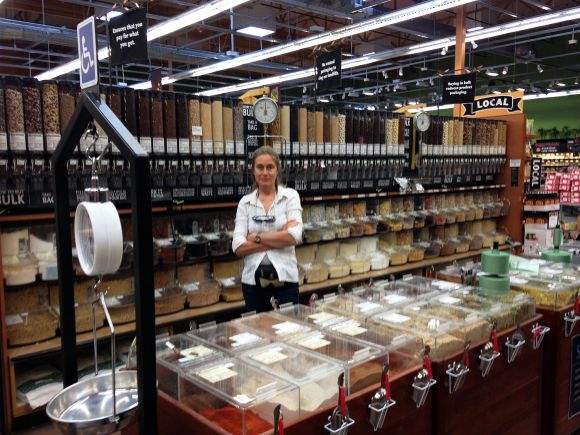
The store also sells prepared meals to eat there or take with you. You can find everything here, from processed foods to vegan raw food from local organic farmers.
- And it is quite difficult to choose the right type of raw food diet. In the next few articles in this series, you will find a list of the different types of raw food diets, along with their advantages and disadvantages, as these are beyond the scope of this article.
- Eating out isn’t easy either, although you will find delicious salads in most good restaurants, both with or without dressing, and fruit salads for breakfast. But it’s true that we raw foodists aren’t as “well served” as our dining neighbors. Most restaurants just do not know about raw food.
For this reason, eating out isn’t always so much fun. Invitations can also be problematic unless the host or hostess understands and respects your reasons for being a raw foodist. But these are the least of our worries.
- What’s worse, in my opinion, is the fact that raw food is unchartered territory for most people. The first step is to make your way through the jungle of information that’s out there. And that takes time.
The following articles include some important, established information about raw food and also some hidden dangers you might encounter, for example, eating uncooked beans.

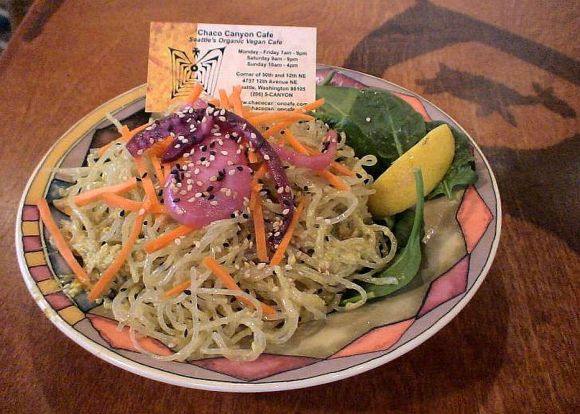
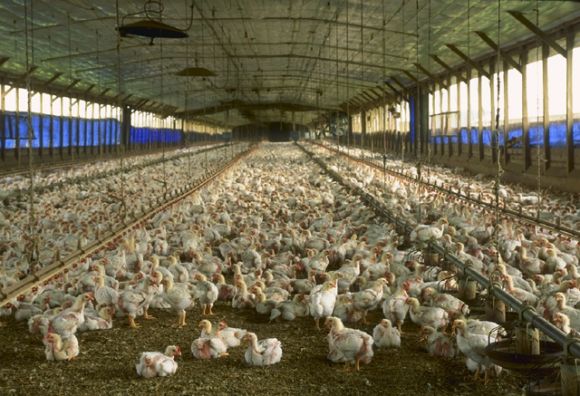
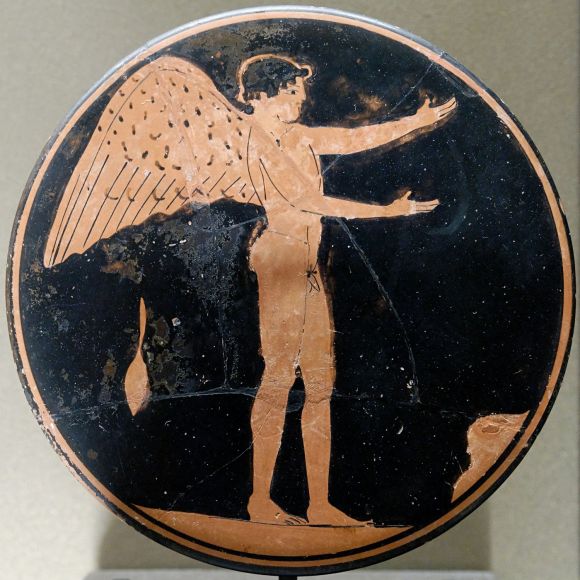
Comments